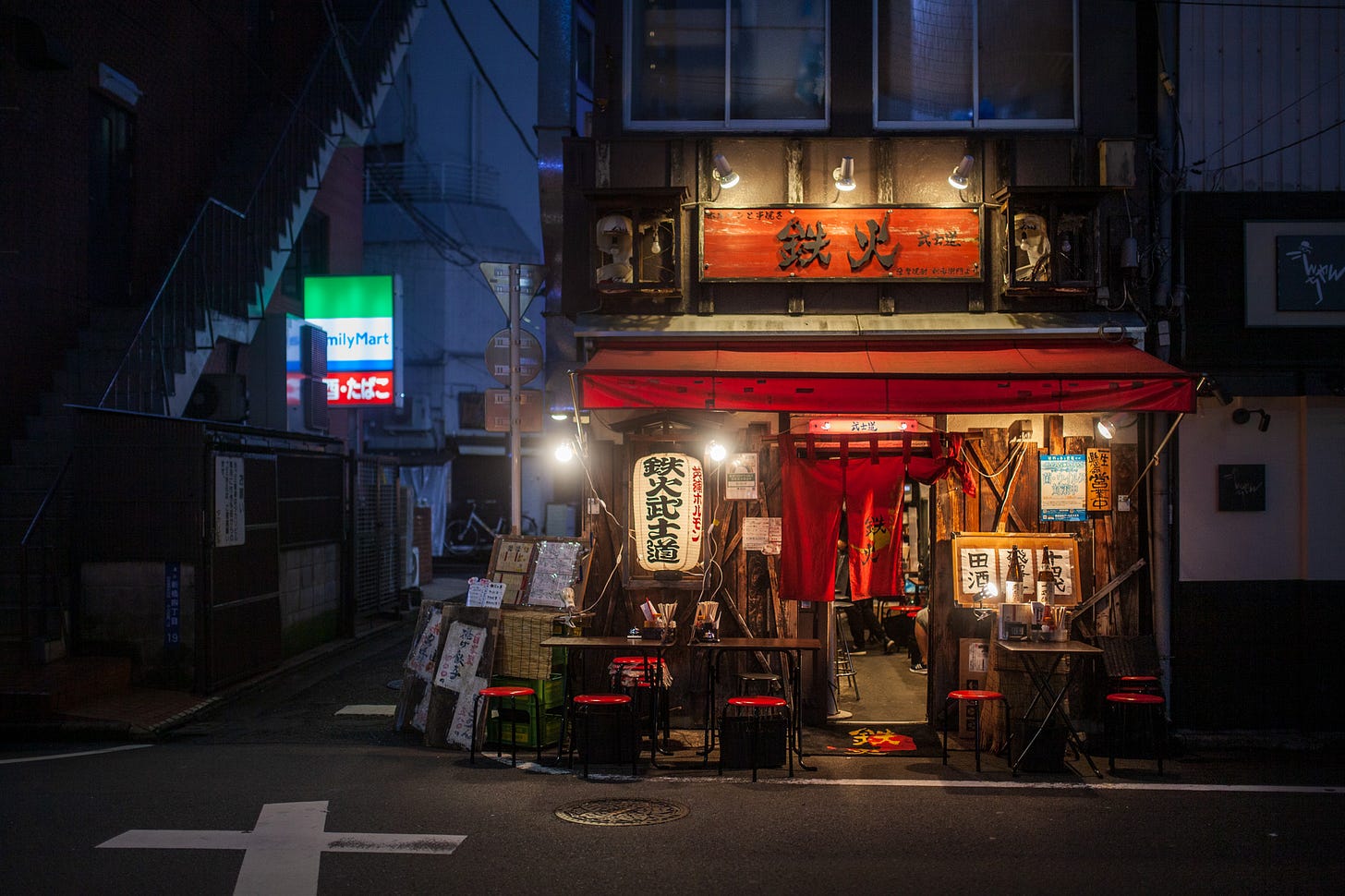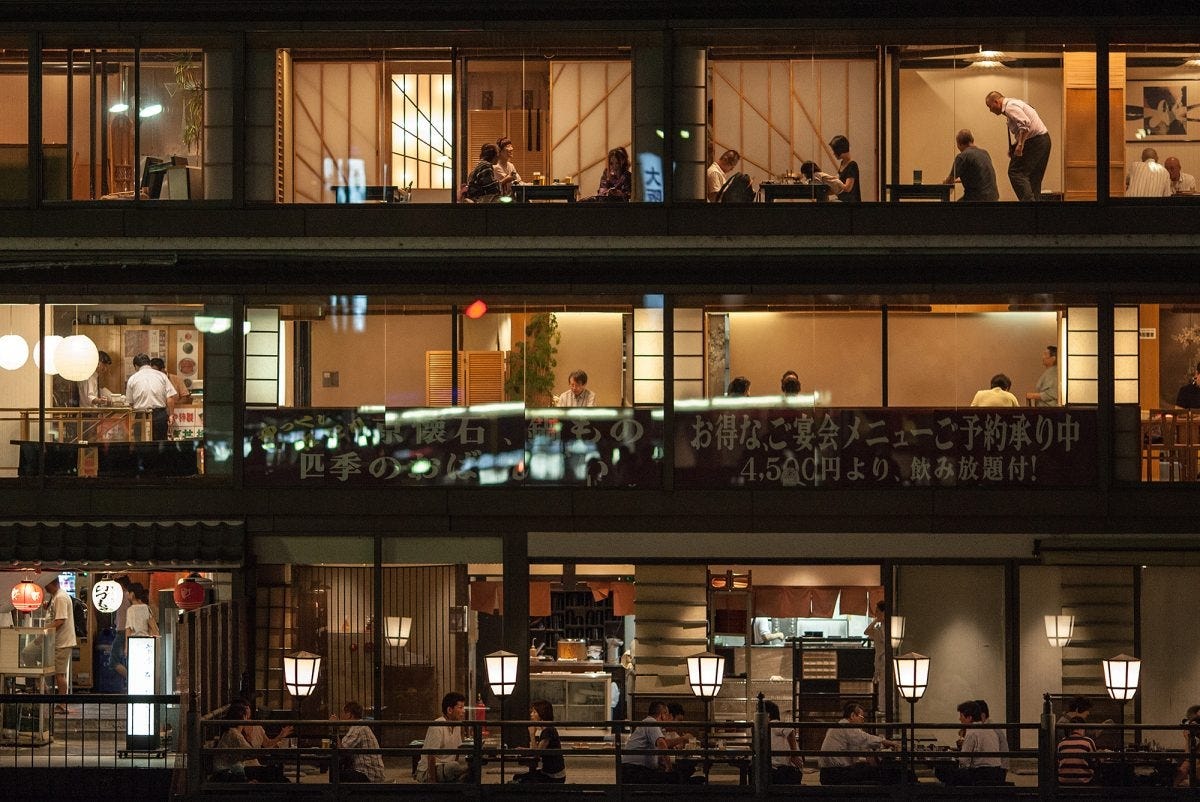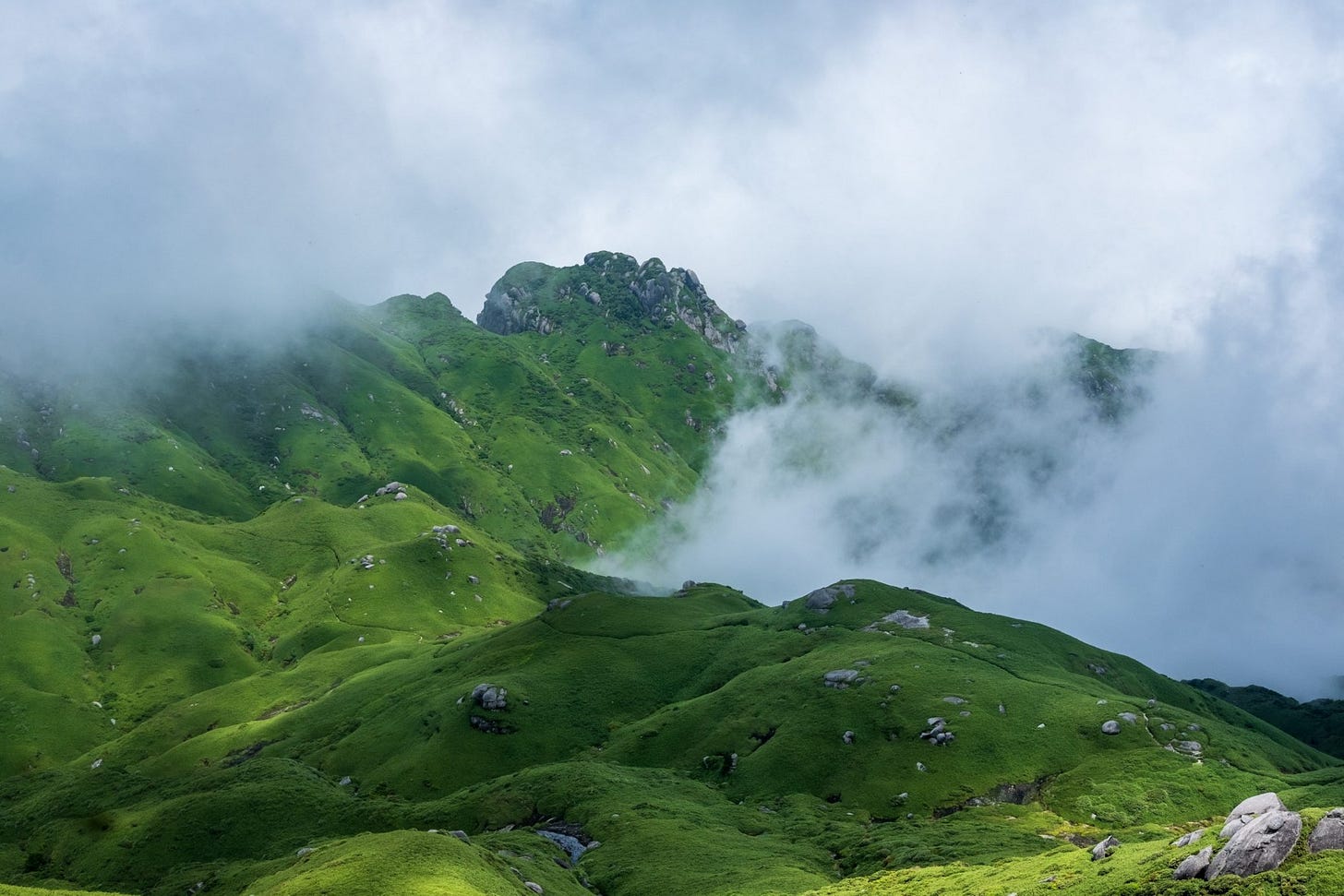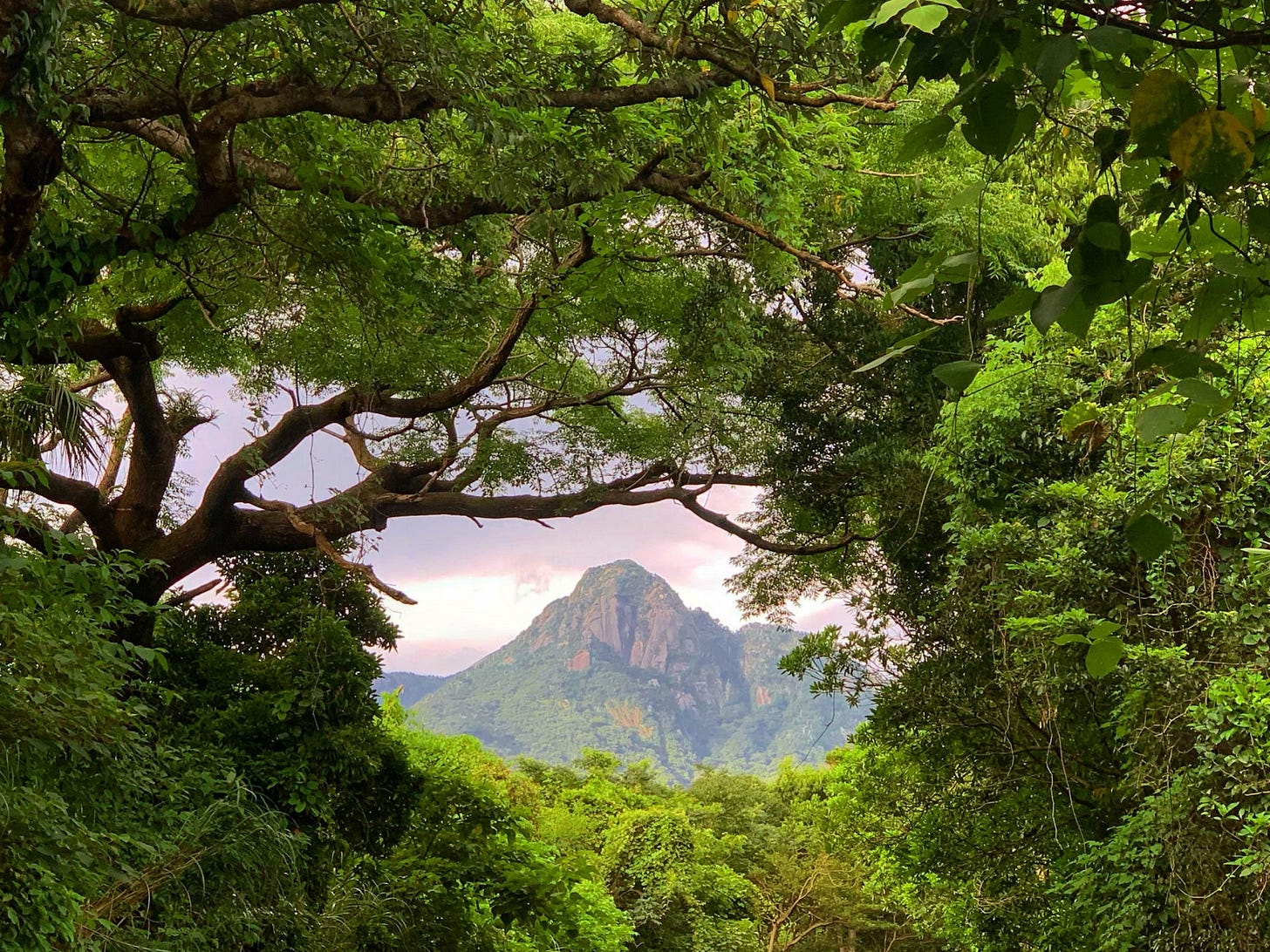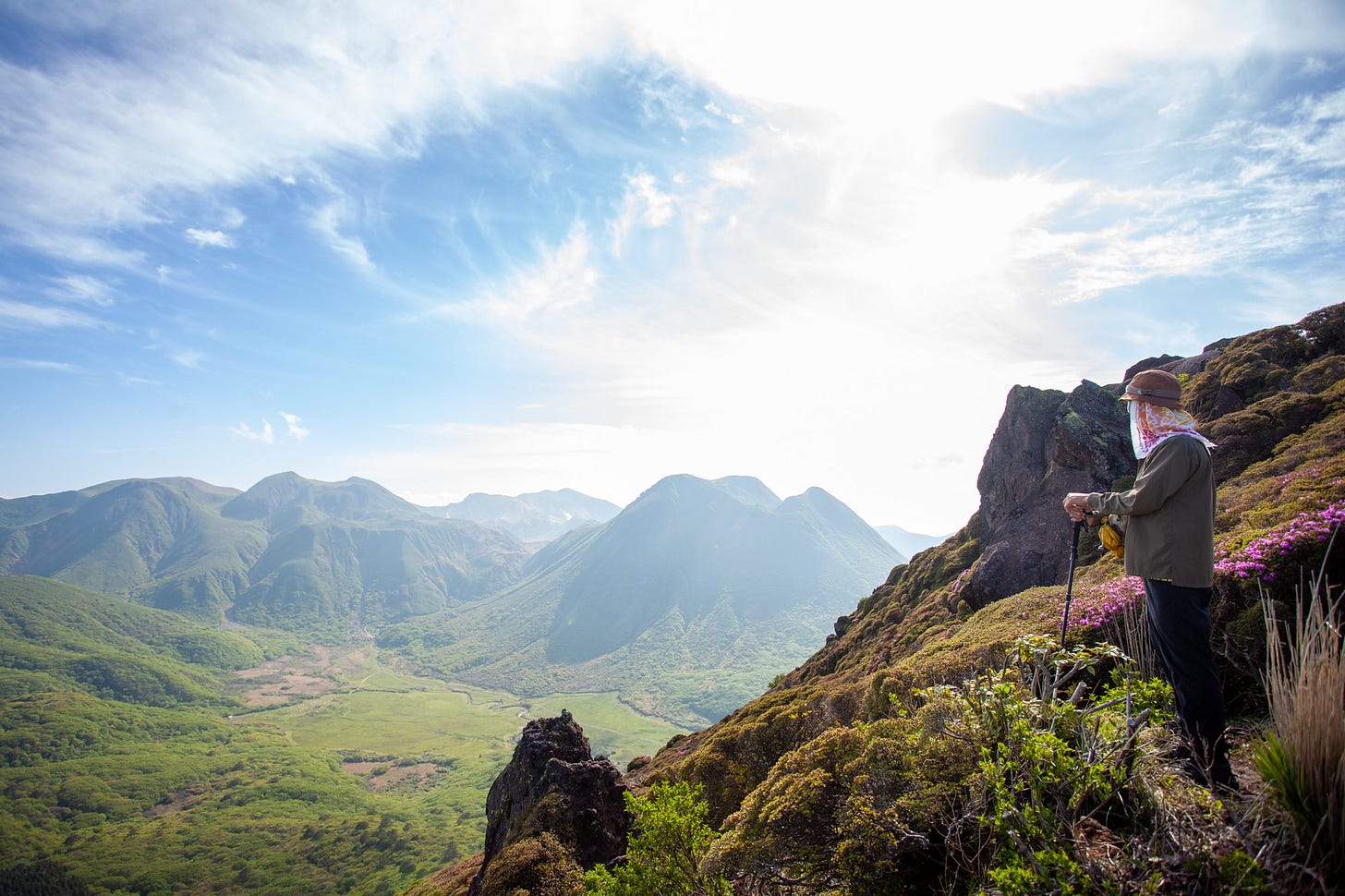Gone For a Hike
Japan, the country of safe walks, and some of my favorite hiking trails in Japan.
“Why did you move to Japan?”. A very reasonable question to ask someone who left her country and moved to the other side of the world at age 39.
For many foreigners living in Japan, the short and satisfying answer to this question may often go like this: “I have always loved the anime culture since I was very young and therefore always wanted to live in Japan” (I know nothing about the anime culture); “I had a job offer that I could not turn down” (why would I? I am not qualified in Japanese law); “I initially came to Japan to teach English, and I loved the country so much that I decided to stay” (my native language is Turkish, and I do not think there is a demand for Turkish language teaching in Japan); or more interestingly, “I had a romantic partner who lived in or moved to Japan” (no such person in my life).
None of the above applies in my case. So why did I move to Japan?
If I were not worried about raising even more questions, my quickest and honest answer to this question would be: “I moved to Japan to walk” - and answer that I assume begs some explanation. I will try to offer one. Walking is essential for my mental health and, thus, my life. Nothing works better than walking for me when it comes to keeping my mental health in check. And I find Japan to be one of the most walkable countries in the world, if not the most, especially for women. The routes are very well-maintained; the safety level is very high even in its largest cities, and there is engaging scenery at every corner.
Take the example of Tokyo, one of the largest and most populated cities in the world (and where I live). The urban scenery offered by the city never feels repetitive as it continuously throws in many surprises to keep things interesting. Yes, there are many high-rise and ultra-modern-looking buildings. But there is also always a tiny little shop holding on to its low-rise building hidden between those skyscrapers, likely there at least since the Showa era and relaying an effortless and unintentional retro aura. The city is full of unexpected visual contrasts, often striking enough to easily satisfy one's daily need for an engaging visual experience. It sure satisfies mine.
Also, the ability to safely walk, even at night, is something that I never take for granted. I find the evening lighting in Asia, with Japan being no exception, to be fascinating—the red lanterns letting you know that a restaurant is still open, flashy neon signs contrasting the darkness of the night, dimly lit restaurants, and even the traffic lights offer a highly cinematic night-time scenery that I cannot get enough of.
And it is not only about the city walks. With 70 % of its land covered by mountains, the country is also home to hundreds, if not thousands, of hiking trails. Some, such as the Shikoku and Kumano Kodo pilgrimage trails, are already well-known to international visitors, whereas others, such as the island traverse on Sadogashima Island that I did this summer, are still waiting to be explored.
After, as usual, this lengthy introduction, here is the topic of this Sunday`s post, a series that I intend to keep under 1000 words and leave the lengthy ramblings to monthly letters: introduction of some of my favorite hiking trails in Japan.
Asahidake to Naka Dake loop hike in Daisetsuzan National Park
If I were, for some reason (a very unlikely scenario), forced to pick only one hike in Japan, I would probably choose the Asahidake to Naka Dake loop hike in Daisetsuzan National Park in Hokkaido.
Daisetsuzan is one rare place in Japan where you can count on complete and uninterrupted disconnection from urban life but, more importantly, fascinating scenery for days on end. It is the largest national park in Japan and is located on the country`s second-largest but least-populated island. It is a seductively wild environment, not only in terms of the wildlife, thanks to a large population of black grizzlies, but also in terms of the scenery that offers the hikers an active volcano, wild onsen, and poisonous craters such as Ohachi-Daira.
The hike starts with a relatively steep climb up to Asahidake, the highest mountain peak in Hokkaido, where you get to hike next to an active crater, fuming in all its glory, the whole time. The trail then leads to one of Japan`s most picturesque valleys, Susoaidaira, where thousands of alpine flowers dominate the scenery every July. I wrote more about Daisetsuzan hikes for my website.
This is one place in Japan where the scenery feels almost as majestic as one encounters along the long trails of New Zealand or Switzerland, two countries blessed with unparalleled natural beauty.
Mount Miyanoura on Yakushima Island
It took me three long visits to Yakushima to finally climb Mount Miyanoura, Kyushu`s highest peak. For some foolish reason, I used to think that the popularity of the Mount Miyanoura hike among Japanese hikers was due to its status as the highest peak in the entire Kyushu (not a negligible feat in a country where achieving certain goals is an important part of why people travel or hike). It is also included in the list of one hundred mountains of Japan, hyaku-meizan,—a list created by Kyuya Fukada that now serves as some sort of goal-setting list for many hikers in the country.
Of course, as I often tend to be when I give in to my prejudices, I was wrong. Mount Miyanoura turned out to be one of the scenically most rewarding hikes that I did in Japan. The scenery along the trail always changes almost every turn, making one feel in awe of the variety of the landscape that this sub-tropical island is home to (thus, the UNESCO status), and making one forget about the strenuous climb. The trail starts with a mossy forest section where you cross the beautiful Yodagawa River that, on a sunny day, rewards you with “eternal” light early in the morning. The day that I hiked to Miyanoura Dake, a yamabushi (mountain monk), was also on the trail. Doing part of the hike with the sounds coming out of Yamabushi`s horagai and being joined by Yakushima deers and monkeys later in the trail turned the whole hike into a preciously memorable experience.
Mount Miyanoura hike is doable as a (long) day hike as a round-trip from the Yodagawa trail. But for those who have time, a more rewarding option is to spend the night in one of the mountain huts along the route and turn it into a traverse hike connecting Yodagawa trailhead to Arakawa trailhead. I wrote more about this hike on my website.
Peak hunting along the Kuju Mountain Range
Even though its neighboring peak, Mount Aso, home to the largest active crater in Japan, located in the southern part of Aso-Kuju National Park in Kyushu, gets all the praise and is more popular, particularly with international visitors, I prefer the hiking experience that the gentle Kuju mountain range over the Aso mountain range. There is a greater diversity of landscape scenery in Kuju whereas the active volcano is the main draw for Mount Aso.
Although all the trails in Kuju are suitable for day hikes, the main allure of Kuju is the Hokkein Onsen, where you can spend the night (and the only way to reach the facility is hiking). The mountain cottage features an onsen and offers both private and dorm-style rooms. It is a wonderful place to unwind after a full day of hiking, mingle with other hikers, and share trail stories.
Now that winter is coming up, I will need to trade hiking trails with snowy onsen towns as I do not have experience in winter hiking. In the meantime, here is a link to a post where I listed some of my other favorite hiking trails in Japan.
Until next Sunday, and thank you, with all my heart, for being here. It means a lot.
P.S.: Sunday posts are “shorter” weekly posts I only post on the Substack website and the app and do not separately send out by e-mail.


